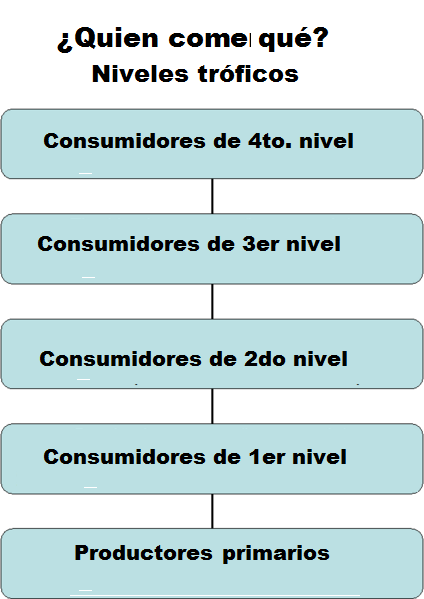Diferencia entre revisiones de «¿Quién come qué?»
De WikiEducator
(leyenda) |
m (→Potential pitfalls) |
||
| Línea 37: | Línea 37: | ||
# Ask students to share their food chains in small groups. | # Ask students to share their food chains in small groups. | ||
| − | === | + | ===Problemas potenciales=== |
| − | + | Algunos problemas que peudes encotrar es léxica y la confusión de distinguir entre los diferentes niveles tróficos. | |
<gallery> | <gallery> | ||
| − | File:Blatta orientalis Vic Catalonia 106.JPG</gallery> | + | File:Blatta orientalis Vic Catalonia 106.JPG<|Blatta orientalis <br>omnivora/gallery> |
| + | |||
===Art connections=== | ===Art connections=== | ||
Students will be drawing pictures of some of the animals enhancing their visual arts experience. | Students will be drawing pictures of some of the animals enhancing their visual arts experience. | ||
Revisión de 05:57 2 dic 2012
Contenido
Quién come que?
Calificación de los alumnos
Tested
Biología 1er ciclo
Niveles tróficos de la cadena alimentaria
Materiales
Materiales necesarios para el profesor:
- Handout with trophic levels and picture examples
- Ejemplo de cadena trofica
Materials that each individual student would need
- Magazines with animals (ex. National Geographic, Ranger Rick, Big Backyard)
- Scissors
- Glue sticks
- Construction paper
Handouts
See Below.
Archivo:Who's eating who.png
ampliable (en inglés)
Description of activity
First the teacher will explain the 5 trophic levels of a food chain to the students using the hand out with the sample food chain (Figure 1). Then once they have learned about trophic levels, autotrophs, and heterotrophs, each student can begin looking through the magazines and cutting out pictures of animals to create their own food chain. Once each student has completed his or her food chain, you can have them share them with the group.
Lesson plan
- Hand out the reference page of the trophic levels (figure 1) to each student.
- First explain the difference between an autotroph and a hetertroph.
- Verify that they know the differences between carnivores, omnivores, and herbivores.
- Next go through each level making sure that each student understands the characteristics of each.
- Provide magazines and scissors for each student to cut out organisms for his or her food chain.
- Once they have finished cutting pass out the glue sticks and construction paper and have each student glue his or her food chain to the construction paper.
- Next have them label each level of their food chain.
- Ask students to share their food chains in small groups.
Problemas potenciales
Algunos problemas que peudes encotrar es léxica y la confusión de distinguir entre los diferentes niveles tróficos.
- ===Art connections===
- Students will be drawing pictures of some of the animals enhancing their visual arts experience.
- ===Literature connections===
- ''Babies in the Bayou'' by Jim Arnosky
- ===Connections to educational standards===
- Visual Arts – 5.29
- Organisms, Evolution, and Interdependence – 7.13
- ===Next steps===
- Once you have covered a simple food chain or web you may continue the lesson by talking about different relationship between animals other than predator and prey situations. For instance relationships that benefit both organisms could be explored.
- ===Citations and links===
- Http://www.instructorweb.com/lesson/animals.asp This website would be very helpful when looking for handouts or a follow up activity.
- ===Reflections===
